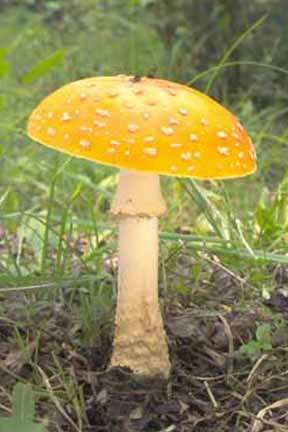
Fungi
of Saskatchewan

|
Home | Start of Key | Cross
References | A-Z Species | About
the Authors | Disclaimer | Glossary
|

|
Fungi
of Saskatchewan |
 |
| |
Home | Start of Key | Cross
References | A-Z Species | About
the Authors | Disclaimer | Glossary
| |
Coprinaceae
This family has black to purple-brown spores that are borne or attached or notched gills, which may deliquesce into inky slime. The cap is often conical with a dry to viscid cuticle, and the stem is usually relatively thin and fragile. All are saprophytes on dung, humus, grassy areas. Several are poisonous, and even the edible ones should not be eaten with alcohol.
| 43a (11a) | Gills white on young fruiting bodies, then black and inky with age, and/or cap with umbrella-like striations; on wood, humus, dung, grass - Coprinus | ||
|
|
|||
| A596-602; Ar342-53; Ba195-9; Bo6, 8; L233-31; M170-4; Mc276-80; P204-5; S143-5, 331 | |||
|
|
|||
| Coprinus: atramentarius,comatus,lagopus,micaceus,plicatilis | |||
| 43b (11a) | Cap narrowly conic, brittle; with a thin rigid stem; single to numerous on dung or in grass, but not cespitose - Panaeolus | ||
|
|
|||
| A602-4; Ar353-60; Ba205; L217-8; M174-7; Mc283; P205; S147, 324, 336 | |||
| 43c (11a) | Campanulate to convex cap, usually on humus or wood, often numerous or cespitose; many species - Psathyrella | ||
|
|
|||
| A599-609; Ar361-6; Ba204; Bo8; L221; M177-9; Mc281-5; P201-3; S149-51, 337 | |||
|
|
|||
| Psathyrella: candolleana,conissans,foeniscii,hydrophila, spadicea,uliginicola |
|||